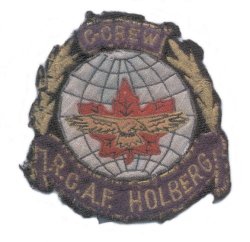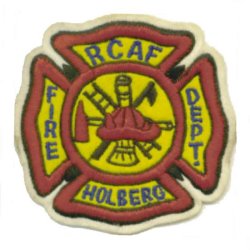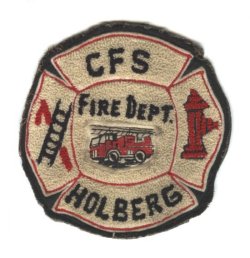NOTICE:Some photos and documents may be marked with varying degrees of classification, up to SECRET. Data so marked is the way it was delivered from official USAF sources, and have been completely declassified. To the best of our knowledge, no currently classified data is stored on this site.The following site information is available: History of Holberg AS, BC, CNIn October 1950, construction began on Mt. Brandes at Holberg on a new radar site to be known as R-35. The site designation was later changed to C-18. The site was partially completed by 1 January 1954 and limited administrative duties began for the newly arrived RCAF personnel. When first opened on 1 January 1954, RCAF Station Holberg was dubbed the western anchor of the Pinetree radar line. The station was declared operational on 25 April 1954 and was initially designated as No. 501 Aircraft Control & Warning Squadron, RCAF Station Holberg. No. 501 Squadron (callsign Consort) reported to 5 Air Division located in Vancouver. On 5 July 1954, the unit was designated simply as RCAF Station Holberg. The name was again changed on 1 August 1956 when it became known as 53 Aircraft Control & Warning Squadron. The units primary task was Early Warning (EW). Holberg was later assigned the duties of EW and Ground Control Intercept (GCI). On 30 September 1957, the squadron took over responsibility for RCAF Station Tofino interceptions which considerably increased their daily workload. The stations role evolved to one of providing data to the SAGE system of the North American Air Defence Command. In 1958, 53 AC&W became 53 Radar Squadron. Holberg reported directly to the Seattle NORAD Sector of the 25th Air Division and in June 1963 Holberg was SAGE-capable. By 1968, the Seattle Sector covered all of British Columbia, Washington State, parts of Alberta, Idaho and Oregon. As a result of unification in October 1967, RCAF Station Holberg became Canadian Forces Station Holberg. Holberg had been a BUIC site but terminated that phase of its operations on 31 December 1973. They did, however, remain as the back-up to 25 Division at McChord. McChord transferred the 25th Division to Malmstrom AFB, Montana on 21 August 1981 as part of the Regional Operations Control Centre (ROCC) concept. Although the location had physically changed, Holberg continued to report to the 25th Division. The only difference was that the Division had moved a substantial distance east. Holberg began to transmit radar data to the Canada West ROCC at North Bay on 18 June 1983. Holberg was unique within all of Air Defence Command since it had its own Marine Section due to its remote location on the northern tip of Vancouver Island. Vessels in its Section over the years included M.975 Nimpkish I, YFP314 Nimpkish II, and the last vessel TYD11 The Cape Scott III. The Cape Scott III departed Holberg for the last time in November 1981. When first formed, the Marine Section was fully manned by RCAF personnel. With Integration, the RCAF Marine Sections throughout the Air Force were disbanded or turned over to Naval personnel. As a result, CFS Holberg became the only station within the Air Defence community to have Naval personnel assigned. When you ask someone what they remember most about their tour at Holberg, the automatic answer is the rain and the wind. Holberg was surrounded by the thick and rugged Quatsino Rain Forest, where the average annual rainfall is around 14 feet per year, accompanied by 120 mile per hour winds in the winter. Authorization for the closure of CFS Holberg was given in 1988 and the site was disbanded on 17 January 1991. Holberg was selected as the site for a Canadian Coastal Radar (CCR) and continues in this capacity. -- The NBC Group - Don Nicks, John Bradley, Chris Charland. |
   |